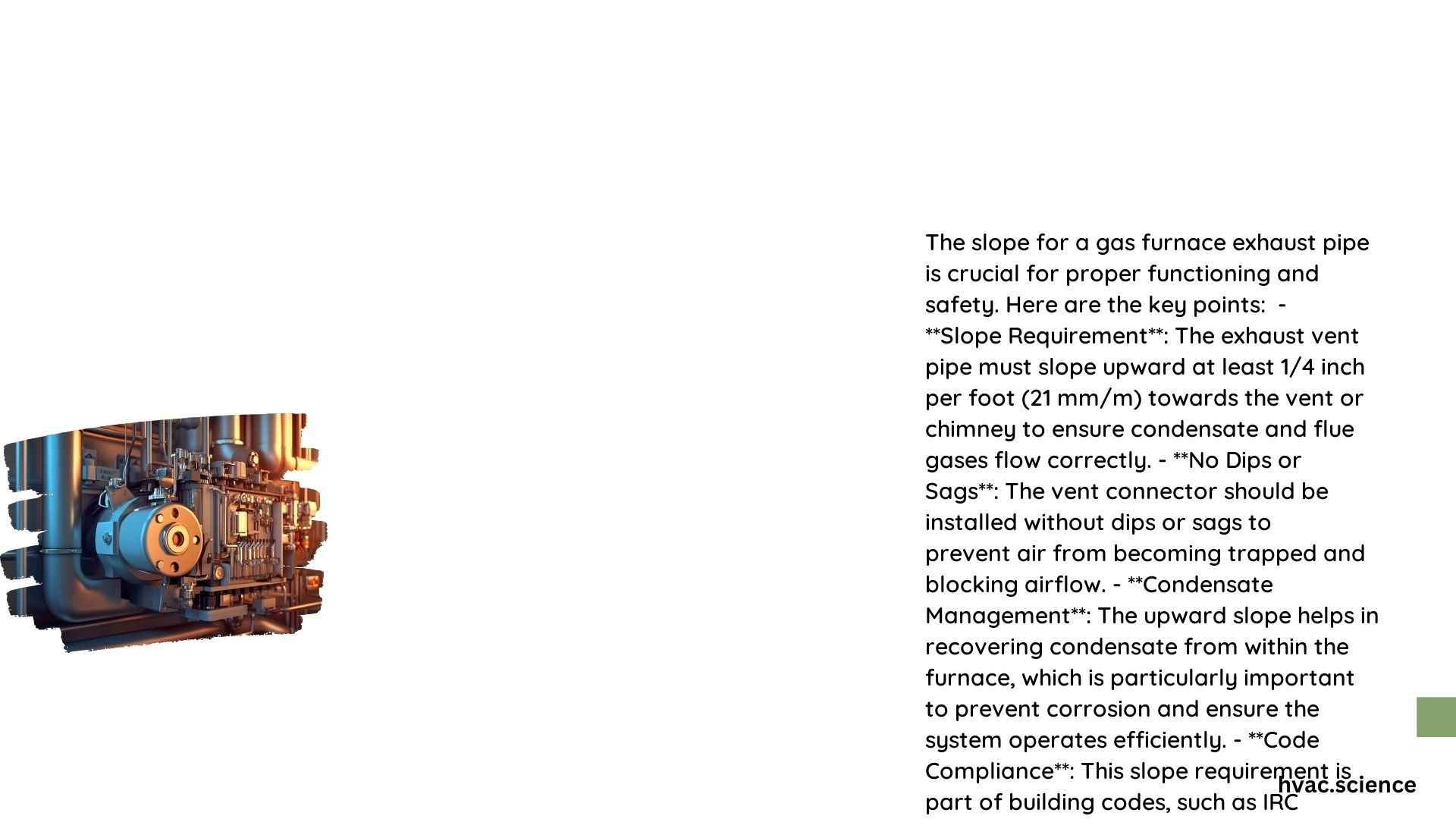Proper slope of the gas furnace exhaust pipe is crucial for ensuring efficient condensate drainage and preventing issues like freezing or accumulation. This comprehensive guide will cover the key aspects of gas furnace exhaust pipe slope, including the recommended direction, measurement, installation requirements, necessary tools and materials, and the steps involved in achieving the correct slope.
What is the Recommended Slope Direction for a Gas Furnace Exhaust Pipe?
The exhaust pipe should slope back towards the furnace to facilitate the drainage of condensate. Sloping the pipe away from the furnace can lead to condensate freezing in colder climates, causing blockages and potential system malfunctions.
How to Measure the Ideal Slope for a Gas Furnace Exhaust Pipe?

While there are no universally standardized measurements, the general guideline is to ensure a gentle pitch to promote condensate drainage. A slope of approximately 1/4 inch per foot is commonly recommended to prevent water from accumulating in the pipe. It’s crucial to avoid any flat sections, dips, or sags in the venting, as these can trap condensate and lead to issues.
What are the Installation Requirements for a Gas Furnace Exhaust Pipe Slope?
To ensure proper installation and compliance with safety standards, the following requirements must be met:
- No Flat Sections: The vent should not have any flat sections to prevent condensate from accumulating.
- No Dips or Sags: The venting should not have any dips or sags that could trap condensate.
- Clearances: The vent must terminate at least one foot from windows and doors, three feet from inside wall corners, one foot above the ground, and one foot below porches, balconies, and decks.
What Tools and Materials are Needed for Adjusting the Slope of a Gas Furnace Exhaust Pipe?
To achieve the correct slope, you may need the following tools and materials:
- PVC Pipe and Fittings: Ensure the PVC pipes and fittings are correctly sized and configured according to the manufacturer’s specifications.
- Supports and Brackets: Use supports and brackets to maintain the desired slope.
- Drain Installation: If necessary, install a drain at the low point of the venting system to handle any condensate that may accumulate.
How to Install the Correct Slope for a Gas Furnace Exhaust Pipe?
It is highly recommended to have a professional HVAC technician perform the installation to ensure compliance with manufacturer specifications and local codes. The cost of adjusting the slope of a gas furnace exhaust pipe can vary depending on the complexity of the job, the materials needed, and the labor costs. It’s best to consult with an HVAC professional for an accurate estimate.
Conclusion
Proper slope of the gas furnace exhaust pipe is essential for efficient condensate drainage and preventing issues like freezing or accumulation. By following the recommended slope direction, measurement, and installation requirements, you can ensure the safe and effective operation of your gas furnace. Remember to consult with a professional HVAC technician for the best results.
